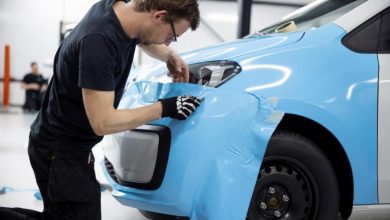When you invest in a vehicle, whether it’s a daily commuter or a spacious home-on-wheels, you’re not just buying a mode of transportation. You’re buying memories, mobility, and miles of possibility. But every vehicle has a lifecycle, and how you manage each phase can drastically affect its long-term value. Whether you’re trying to stretch your car’s lifespan or deciding if your old RV has reached the end of the road, knowing how to extract the most value, emotionally, financially, and environmentally, is a game-changer. And if you’re someone who appreciates smooth road trips and summer getaways, understanding the importance of top-quality RV A/C maintenance is just one piece of the bigger picture.
The Rollercoaster of Vehicle Value
The moment a new vehicle is driven off the lot, it starts to lose value. This phenomenon, known as depreciation, is particularly aggressive in the first few years. For most standard vehicles, the biggest drop, often as much as 20-30%, occurs within the first year. After five years, your car might only be worth around 40-50% of its original price, depending on brand, condition, mileage, and demand.
RVs tend to follow a similar curve, but with a few unique quirks. Their depreciation may slow if well-maintained, especially because many RV buyers are willing to purchase used models for a better price point. The more features and upgrades you have, the harder the vehicle may be to appraise accurately, but these extras can sometimes bolster resale value if they’re in working condition.
The key is recognizing that value isn’t just monetary. Convenience, reliability, and comfort matter too. If your vehicle still provides all of these, even at a depreciated dollar figure, its real worth may still be high.
The Art of Prolonging Your Vehicle’s Life
One of the smartest ways to protect your investment is to take care of it regularly, not just when issues arise. Preventive maintenance is like a fountain of youth for cars and RVs. Oil changes, brake checks, fluid flushes, tire rotations, these aren’t just annoying appointments on your calendar. They’re the building blocks of long-term performance.
Don’t overlook systems that don’t scream for attention. Air conditioning, for example, might seem like a luxury until it stops working mid-July on a cross-country drive. Investing in routine inspections pays off when you’re enjoying uninterrupted comfort miles away from the nearest repair shop.
Keep in mind that small repairs done promptly can prevent major damage down the line. A small leak might cost $50 today, but ignoring it could result in thousands in repairs later. Maintenance also builds trust with future buyers. A well-documented history of care makes your vehicle more appealing and easier to sell.
Sell It or Scrap It? The Million-Mile Question
There comes a point when every vehicle owner asks: Should I fix this or let it go? The answer depends on several factors, some emotional, others practical. If your vehicle has racked up high mileage, requires constant repairs, or faces a major issue like a failed transmission or engine block, it might be time to part ways.
But parting ways doesn’t mean tossing it to the side of the road. Sites like https://byotautoparts.com/ offer convenient and fair processes for turning that worn-out car or RV into something still useful. Whether it’s stripped for parts or recycled responsibly, your vehicle doesn’t have to end up as landfill waste.
Consider your repair-to-value ratio. If fixing the vehicle costs more than 50-60% of its current market value, scrapping or selling as-is is usually more logical. Also, ask yourself how much downtime you’re willing to tolerate. Constant visits to the mechanic mean more than just bills; they’re disruptions to your daily routine.
The Treasure Hidden in Rust
Just because your car doesn’t start or your RV hasn’t moved in months doesn’t mean it’s worthless. In fact, older and even non-operational vehicles often hold hidden value. Components such as alternators, radiators, engines, transmissions, and even seats can be harvested and sold. Metals can be melted down and reused, contributing to both your wallet and a cleaner planet.
Salvage yards and auto recyclers know how to extract every ounce of usable material. They often pay decent money for cars that no longer function, especially if major parts are intact. This is true even for vehicles that have been in accidents; one person’s totaled car might be another’s parts goldmine.
Instead of letting an aging vehicle gather dust in your driveway, consider the impact of turning it into a donor for someone else’s repair job. In some cases, you may even be eligible for a tax write-off if you choose to donate it.
A Greener Goodbye: The Rise of Eco-Conscious Vehicle Disposal
Sustainability isn’t just for grocery bags and water bottles, it applies to your vehicle too. Disposing of a vehicle responsibly ensures that as much material as possible is reused, reducing the environmental burden. Everything from rubber and glass to fluids and plastics can be recycled or safely disposed of through certified channels.
Junking your vehicle through a trusted buyer or recycling service ensures hazardous materials don’t end up in the soil or water. It also keeps reusable parts in circulation, lowering the need for new manufacturing, a win for the planet and for budget-conscious mechanics and buyers.
Some services even go the extra mile by issuing certificates of destruction, ensuring that your vehicle won’t resurface in questionable condition elsewhere. These small assurances contribute to a larger system of ethical, responsible automotive turnover.
Your vehicle’s journey doesn’t have to end with a breakdown or a for-sale sign. By understanding depreciation, practicing routine care, recognizing the right time to move on, and embracing eco-friendly solutions, you can ensure your vehicle serves a meaningful purpose from its first mile to its last. Whether it’s a car that’s taken you to work for a decade or an RV that’s carried you across the country, there’s always value to be found, even when the engine’s gone quiet.




